NASA has solved the mystery of Voyager 1's strange data transmissions

As NASA wrestles with Artemis 1's engine woes that are delaying the return to human exploration of the moon, the agency has solved another mystery, one causing its 45-year-old spacecraft, Voyager 1, to transmit garbled data.
NASA engineers have found the bug that was causing critical instruments on the four-decade-old spacecraft to send "garbled" health information to mission controllers on Earth.
- Apple Vision Pro review: Fascinating, flawed, and needs to fix 5 things
- Apple builds a slimmed-down AI model using Stanford, Google innovations
- I tested the AI gadget that got the internet buzzing and it left me wanting more
- 9 biggest announcements at Google I/O 2024: Gemini, Search, Project Astra, and more
Voyager 1's attitude articulation and control system (AACS), which keeps its antenna directed at Earth, earlier this year started to send back information that didn't reflect what was actually happening onboard . The AACS appeared to be functioning normally, but the data it was sending back was deemed invalid because it didn't match any possible state the system could be in.
SEE: What is Artemis? Everything you need to know about NASA's new moon mission
Also, the rest of the probe appeared healthy, since it continued to gather and return science data.
The agency today said it has found the source of the garbled information: a zombie computer that should not have been used to relay telemetry data.
"The AACS had started sending the telemetry data through an onboard computer known to have stopped working years ago, and the computer corrupted the information," NASA said in a press release .
While NASA engineers have solved the problem, they still don't know why the AACS started routing information through the non-functioning computer. However, they guess that the AACS probably received a faulty command from another onboard computer.
NASA notes that if that other onboard computer generated a bad command, there could be an issue somewhere else on the spacecraft. The search continues for what the underlying issue is, but engineers believe it won't drastically harm its future.
SEE: NASA's new tiny, high-powered laser could find water on the Moon
"We're happy to have the telemetry back," said Suzanne Dodd, Voyager's project manager.
"We'll do a full memory readout of the AACS and look at everything it's been doing. That will help us try to diagnose the problem that caused the telemetry issue in the first place. So we're cautiously optimistic, but we still have more investigating to do."
Voyager 1 launched from Cape Canaveral in September 1977 and is now the farthest spacecraft from Earth, traveling in space at about 14.5 billion miles (23.3 billion kilometers) away. It would take light about 20 hours to travel from the spacecraft.
The Voyager 1 was the first human-made object to reach into interstellar space and in 1998 overtook NASA's Pioneer 10 to become the most distant human-made object.
It reached interstellar space in August 2012 and, among other things, takes measurements of the density of material in interstellar space . It will eventually exit the solar system but not for a long, long time.

The best network-attached storage devices you can buy: Expert tested
Qualcomm's ai dreams and microsoft's built-to-last laptops lead the innovation index, the best laptop docking stations you can buy: expert tested.
The July 2024 issue of IEEE Spectrum is here!
For IEEE Members
Ieee spectrum, follow ieee spectrum, support ieee spectrum, enjoy more free content and benefits by creating an account, saving articles to read later requires an ieee spectrum account, the institute content is only available for members, downloading full pdf issues is exclusive for ieee members, downloading this e-book is exclusive for ieee members, access to spectrum 's digital edition is exclusive for ieee members, following topics is a feature exclusive for ieee members, adding your response to an article requires an ieee spectrum account, create an account to access more content and features on ieee spectrum , including the ability to save articles to read later, download spectrum collections, and participate in conversations with readers and editors. for more exclusive content and features, consider joining ieee ., join the world’s largest professional organization devoted to engineering and applied sciences and get access to all of spectrum’s articles, archives, pdf downloads, and other benefits. learn more about ieee →, join the world’s largest professional organization devoted to engineering and applied sciences and get access to this e-book plus all of ieee spectrum’s articles, archives, pdf downloads, and other benefits. learn more about ieee →, access thousands of articles — completely free, create an account and get exclusive content and features: save articles, download collections, and talk to tech insiders — all free for full access and benefits, join ieee as a paying member., how nasa is hacking voyager 1 back to life, engineers found space in the geriatric spacecraft’s memory to deal with a stuck bit.

Voyager 1 whizzes through interstellar space at 17 kilometers per second.
On 14 November 2023, NASA’s interstellar space probe Voyager 1 began sending gibberish back to Earth. For five months, the spacecraft transmitted unusable data equivalent to a dial tone.
In March, engineers discovered the cause of the communication snafu: a stuck bit in one of the chips comprising part of Voyager’s onboard memory. The chip contained lines of code used by the flight data subsystem (FDS), one of three computers aboard the spacecraft and the one that is responsible for collecting and packaging data before sending it back to Earth.
JPL engineers sent a command through the Deep Space Network on 18 April to relocate the affected section of code to another part of the spacecraft’s memory, hoping to fix the glitch in the archaic computer system. Roughly 22.5 hours later, the radio signal reached Voyager in interstellar space, and by the following day it was clear the command had worked. Voyager began returning useful data again on 20 April.
NASA engineers managed to diagnose and repair Voyager 1 from 24 billion kilometers away—all while working within the constraints of the vintage technology. “We had some people left that we could rely on [who] could remember working on bits of the hardware,” says project scientist Linda Spilker . “But a lot of it was going back through old memos, like an archeological dig to try and find information on the best way to proceed.”
Minuscule Memory
Voyager 1 and its twin, Voyager 2—which also remains operational—were launched nearly 50 years ago, in 1977, to tour the solar system. Both spacecraft far surpassed their original missions of visiting Jupiter and Saturn, and in 2012, entered interstellar space .
“That mission literally rewrote the textbooks on the solar system,” says Jim Bell , a planetary scientist at Arizona State University and author of a book recounting 40 years of the mission. “We’ve never sent anything out that far, so every bit of data they send back is new.” The 1960s and 1970s technology, on the other hand, is now ancient.
Decades after the tech went out of vogue, the FDS still uses assembly language and 16-bit words . “These are two positively geriatric spacecraft,” says Todd Barber , a propulsion engineer for Voyager. Working to fix the issues, he says, is “like palliative care.”
To first diagnose the issue, NASA’s engineers first tried turning on and off different instruments, says Spilker. When that proved unsuccessful, they initiated a full memory readout of the FDS. “That’s what led to us finding that piece of hardware that had failed and that 256-bit chunk of memory,” she says. In one chip, the engineers found a stuck bit, fixed at the same binary value. It became clear that the chip was irreparable, so the team had to identify and relocate the affected code.
However, no single location was large enough to accommodate the extra 256 bits. “The size of the memory was the biggest challenge in this anomaly,” says Spilker. Voyager’s computers each have a mere 69.63 kilobytes of memory.
To begin fixing the issue, the team searched for corners of Voyager’s memory to place segments of code that would allow for the return of engineering data, which includes information about the status of science instruments and the spacecraft itself. One way the engineers freed up extra space was by identifying processes no longer used. For example, Voyager was programmed with several data modes—the rate at which data is sent back to Earth—because the spacecraft could transmit data much faster when it was closer to Earth. At Jupiter, the spacecraft transmitted data at 115.2 kilobits per second; now, that rate has slowed to 40 bits per second, and faster modes can be overwritten. However, the engineers have to be careful to ensure they don’t delete code that is used by multiple data modes.
Having successfully returned engineering data, the team is working to relocate the rest of the affected code in the coming weeks. “We’re having to look a little harder to find the space and make some key decisions about what to overwrite,” says Spilker. When their work is completed, the Voyager team hopes to return new science data, though unfortunately, all data from the anomaly period was lost.
Built to Last
The cause of the stuck bit is a mystery, but it’s likely the chip either wore out with age or was hit by a highly energetic particle from a cosmic ray. Having entered interstellar space, “Voyager is out bathed in the cosmic rays,” Spilker says. Luckily, the spacecraft was built to take it, with its electronic components shielded from the large amount of radiation present at Jupiter. “That’s serving us quite well now in the interstellar medium.”
When Voyager was built, the 12-year trip to Uranus and Neptune alone was a “seemingly impossible goal for a 1977 launch,” says Barber. The longevity of Voyager is a testament of its engineering, which accounted for many contingencies and added redundancy. The mission also included several firsts, for example, as the first spacecraft with computers able to hold data temporarily using volatile CMOS memory. (An 8-track digital tape recorder onboard stores data when collected at a high rate.)
Importantly, it was also the first mission with a reprogrammable computer. “We take it for granted now,” Bell says, but before Voyager, it wasn’t possible to adjust software in-flight. This capability proved essential when the mission was extended, as well as when issues arise.
Going forward, the Voyager team expects to encounter additional problems in the aging spacecraft—though they hope to make it to the 50-year anniversary before the next one. “With each anomaly, we just learn more about how to work with the spacecraft and are just amazed at the capabilities that the engineers built into it using that 1960s and ’70s technology,” Spilker says. “It’s just amazing.”
- 50 Years Later, This Apollo-Era Antenna Still Talks to Voyager 2 ›
- Voyager 1 Hasn't Really Left The Solar System, But That's OK ›
- Mission Status - Voyager ›
- Voyager 1 ›
Gwendolyn Rak is a contributor to IEEE Spectrum with interests in biotechnology and aerospace. She holds a master’s degree in science journalism from New York University.
I worked with COSMAC and similar rudimentary processors in the early 70’s so was curious to learn how they solved this problem. The nearest it got was “they initiated a full memory readout of the FDS.” But if the telemetry was faulty how did the get the readout?
Australia Debates Going Nuclear
Autonomous vehicles can make all cars more efficient, high schooler brings ieee mobile disaster-relief tech to campus, related stories, nasa approves mission to launch “artificial star”, sharp-eyed telescope tracks satellites during daylight, satellite radar sharpens ukraine dam collapse questions.
- Samsung Unpacked 2024
- Best early Prime Day deals
- Smart highway coming to Michigan
- iPad Air M2 hits record-low price
- Prime Day 'Fire' sale
NASA fixed the glitch that caused Voyager 1 to send back jumbled data
The probe was apparently sending back data through a broken onboard computer..
Back in May, NASA reported that the Voyager 1 space probe was sending back jumbled or inaccurate telemetry data. The probe itself seemed to be in good shape, with a signal that's still strong enough to beam back information, and nothing was triggering its fault protection systems that would put it in "safe mode." According to NASA, the Voyager team has not only figured the problem out since then — it has also solved the issue .
Turns out we're getting jumbled data here on Earth, because the probe's attitude articulation and control system (AACS) has been sending back information through an onboard computer that had stopped working years ago. The computer was corrupting the data before it even went out. Voyager project manager Suzanne Dodd said that when her team suspected that this was the issue, they implemented a low-risk fix: They commanded the AACS to send its data through the probe's working computer again.
While the engineers have fixed the glitch, they've yet to figure out why the AACS started routing information through the old computer in the first place. They believe it was triggered by a faulty command by another onboard computer, which was itself triggered by an underlying issue with the spacecraft. Voyager's engineers will keep looking for the problem's root case, NASA said, but they don't think it will have a huge effect on the spacecraft's operations.
Voyager 1 has been operational for almost 45 years and had reached interstellar space in 2012. NASA expects it to continue being able to run at least one science instrument until 2025, after which it will keep drifting away from our solar system until it loses contact with NASA's Deep Space Network.
Latest Stories
Ftc warns some pc manufacturers that they're violating right to repair rules.
The FTC warned ASRock, Gigabyte and Zotech to get rid of them 'warranty void' stickers and stop threatening to void warranties if users break the seal.
The Morning After: Samsung’s Galaxy Z Flip 6 and Fold 6 leak early
The biggest news stories this morning: The Game Boy Camera gets a second life as a webcam, Japan’s government finally says goodbye to floppy disks, What Meta should change about Threads.
The best iPhone cases for 2024
Here are the best iPhone cases you can buy right now, as chosen by Engadget editors.
The best 4th of July sales from Apple, Amazon, Anker and more
These are the best July 4 deals on tech that you can get this year, including discounts on Apple devices, Solo Stove gear, small kitchen appliances and more.
The best password manager for 2024
Remembering dozens of passwords can be difficult for anyone. These are the best password managers you can use to keep your information safe and secure.
Samsung Galaxy Z Flip 6 and Z Fold 6 product pages have been leaked
The Samsung Galaxy Z Flip 6 will come with a 50-megapixel rear camera for the first time, a bigger battery than any of its predecessors and a bunch of AI features, according to the product pages leaked by Evan Blass on Substack.
Your next webcam could be a Game Boy Camera
Epilogue is adapting its emulator app to turn Game Boy Cameras into fuzzy yet functional webcams.
Cloudflare is taking a stand against AI website scrapers
Cloudflare has introduced a free tool for any of its clients to block all known AI website crawlers, even those that aren't following the rules.
Japan’s government says goodbye to floppy disks
Japan’s Digital Agency announced on Wednesday it will no longer use outdated floppy disks to operate its government computer systems.
The Watch Dogs movie has finally started filming after 10 years
The Watch Dogs movie is finally in the works after 10 years in development.
This Kindle Unlimited early Prime Day deal gives you a free three-month subscription
Amazon Prime members can grab three free months of Kindle Unlimited in this early Prime Day offer.
Amazon pulls the plug on the business version of its Astro robot
After less than eight months, Amazon has discontinued the business version of its Astro security robot. Despite being “fully committed” to its home robotics division, the company has pulled the plug on the model that doubled as a security guard.
The best early Amazon Prime Day deals for 2024
Amazon Prime Day 2024 arrives in July; here are all of the best early Prime Day deals you can shop right now before the event begins.
The iPad and Blackmagic's Micro Color Panel make strange bedfellows
In the Venn diagram of people who only edit on iPad and those willing to drop $508 on Blackmagic Design's Micro Color Panel, the overlap is probably tiny.
Virtual tabletop gaming platform Roll20 experienced a serious data breach
Roll20 experienced a serious data breach that compromised personal information. It looks like a rogue got into an administrative account.
Prime Day deals have already discounted our favorite JLab wireless earbuds to only $20
Amazon has Engadget’s favorite pair of budget running headphones on sale for 33 percent off. The JLab Go Air Sport surprised us with its combination of affordability, sound quality and battery life.
What Meta should change about Threads, one year in
Threads has grown to 175 million users, but it's still not really clear what it's actually for.
Twilio hack leaves Authy users exposed to text-messaging scams
If you use Authy, update your app immediately. Twilio, the messaging company that owns the two-factor authentication service, confirmed on Wednesday that hackers breached Twilio and acquired mobile phone numbers for 33 million users.
Early Prime Day deals include up to 58 percent off Amazon Fire tablets
Early Prime Day deals include up to 58 percent off Amazon Fire tablets. This brings the Fire HD 8 down to a record low of $55.
Early Prime Day deals bring the Samsung Galaxy S9+ tablet down to a record-low price
Get the Samsung Galaxy S9+ tablet for $749.

- July 4, 2024 | Cosmic Fireworks: Celebrating Independence Day With Webb’s Star Formation Spectacle
- July 4, 2024 | Revolutionizing Antibiotics: How MIT’s Water-Soluble Enzymes Could Change the Game
- July 3, 2024 | Pulsating Beacons: Revolutionary Measurements Redefine Cepheid Stars
- July 3, 2024 | Cross-Species Heart Study Provides a New Understanding of Human Evolution
- July 3, 2024 | Scientists Discover Surprisingly Simple Method To Ease Lower Back Pain
Back From the Brink: NASA’s Voyager 1 Restores Data Transmission After 5 Months
By Jet Propulsion Laboratory April 23, 2024
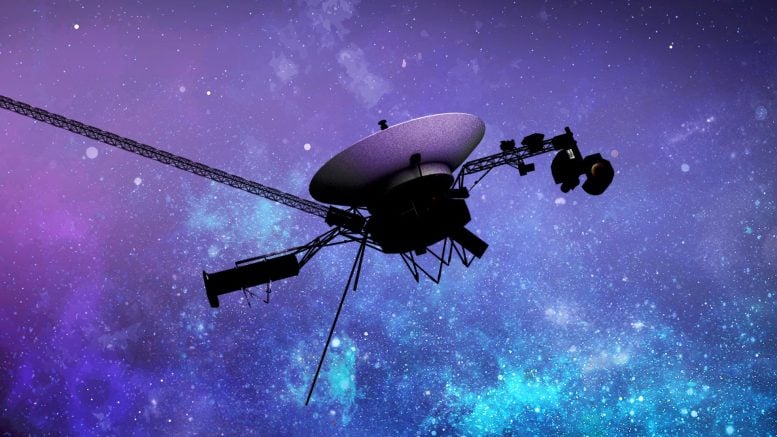
Artist’s illustration of one of the Voyager spacecraft. Credit: Caltech/NASA-JPL
NASA ’s Voyager 1 spacecraft has begun transmitting usable engineering data for the first time since November after a chip failure in one of its onboard computers halted data transmission.
For the first time since November 2023 , NASA’s Voyager 1 spacecraft is returning usable data about the health and status of its onboard engineering systems. The next step is to enable the spacecraft to begin returning science data again. The probe and its twin, Voyager 2, are the only spacecraft to ever fly in interstellar space (the space between stars).
Voyager 1 stopped sending readable science and engineering data back to Earth on November 14, 2023, even though mission controllers could tell the spacecraft was still receiving their commands and otherwise operating normally. In March, the Voyager engineering team at NASA’s Jet Propulsion Laboratory in Southern California confirmed that the issue was tied to one of the spacecraft’s three onboard computers, called the flight data subsystem (FDS). The FDS is responsible for packaging the science and engineering data before it’s sent to Earth.
Solution to the Memory Issue
The team discovered that a single chip responsible for storing a portion of the FDS memory — including some of the FDS computer’s software code — isn’t working. The loss of that code rendered the science and engineering data unusable. Unable to repair the chip, the team decided to place the affected code elsewhere in the FDS memory. But no single location is large enough to hold the section of code in its entirety.
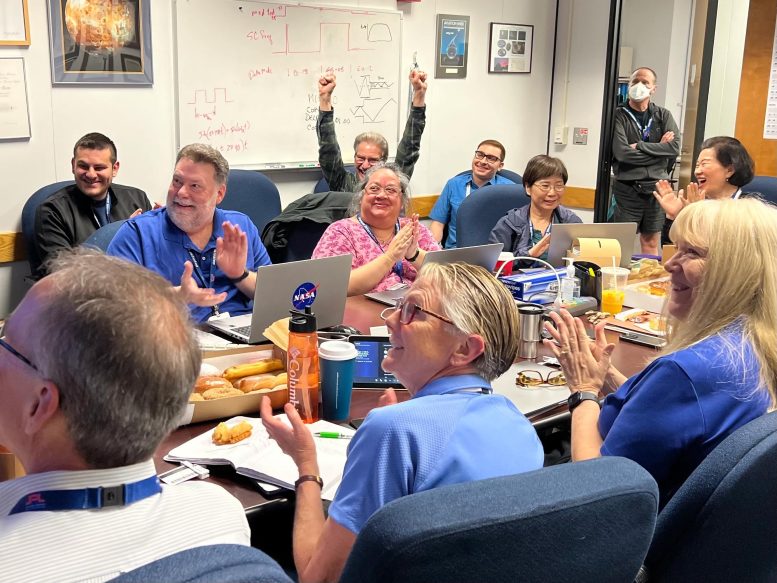
After receiving data about the health and status of Voyager 1 for the first time in five months, members of the Voyager flight team celebrate in a conference room at NASA’s Jet Propulsion Laboratory on April 20. Credit: NASA/JPL-Caltech
Implementing the Fix
So they devised a plan to divide the affected code into sections and store those sections in different places in the FDS. To make this plan work, they also needed to adjust those code sections to ensure, for example, that they all still function as a whole. Any references to the location of that code in other parts of the FDS memory needed to be updated as well.
The team started by singling out the code responsible for packaging the spacecraft’s engineering data. They sent it to its new location in the FDS memory on April 18. A radio signal takes about 22 ½ hours to reach Voyager 1, which is over 15 billion miles (24 billion kilometers) from Earth, and another 22 ½ hours for a signal to come back to Earth. When the mission flight team heard back from the spacecraft on April 20, they saw that the modification worked: For the first time in five months, they were able to check the health and status of the spacecraft.
Future Plans and Voyager 2 Status
During the coming weeks, the team will relocate and adjust the other affected portions of the FDS software. These include the portions that will start returning science data.
Voyager 2 continues to operate normally. Launched over 46 years ago , the twin Voyager spacecraft are the longest-running and most distant spacecraft in history. Before the start of their interstellar exploration, both probes flew by Saturn and Jupiter , and Voyager 2 flew by Uranus and Neptune .
Caltech in Pasadena, California, manages JPL for NASA.
More on SciTechDaily

Megalodon – The Largest Shark That Ever Lived – Could Eat Prey the Size of Entire Killer Whales

Earth and Mars Were Formed From Collisions of Large Bodies Made of Inner Solar System Material

Detailed 3D Map Reveals Peanut Shape of Milky Way’s Inner Regions

NASA’s Terra Satellite Images California’s Kincade Fire Burn Scar From Space
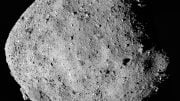
NASA’s OSIRIS-REx Spacecraft Discovers Water on Asteroid Bennu
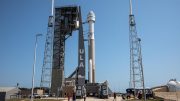
Boeing’s Orbital Flight Test-2 Starliner and Atlas V Rocket Roll Out To Launch Pad
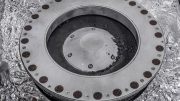
NASA’s OSIRIS-REx Surpasses Asteroid Sample Collection Goal

Preliminary Data Suggests Mixing COVID-19 Vaccines Increases Frequency of Adverse Reactions
2 comments on "back from the brink: nasa’s voyager 1 restores data transmission after 5 months".
It takes a licking and keeps on ticking…
Amazing spacecraft (both of them), and the scientists and engineers who keep the Voyagers going after all these years really deserve so much credit.
Leave a comment Cancel reply
Email address is optional. If provided, your email will not be published or shared.
Save my name, email, and website in this browser for the next time I comment.
After months of sending gibberish to NASA, Voyager 1 is finally making sense again
NASA's Voyager 1 probe has resumed sending usable data back to Earth after engineers fixed a computer error that caused the interstellar spacecraft to only transmit gibberish for five months.
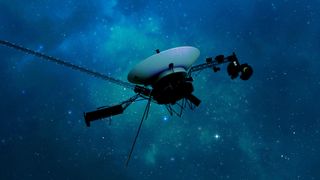
NASA's Voyager 1 probe is once again sending readable radio signals back to Earth after engineers fixed a computer glitch that caused the spacecraft to malfunction in November .
For the first time in five months, Voyager 1 is now transmitting usable data about the health and status of its onboard engineering systems back to our planet, NASA's Jet Propulsion Laboratory announced Monday (April 22). However, engineers have yet to fix the software that enables the spacecraft to return science data.
Voyager 1 is cruising through interstellar space roughly 15 billion miles (24 billion kilometers) away from Earth, which means mission control teams have to wait 22.5 hours for their commands to reach the spacecraft and another 22.5 hours for a response. Voyager 1 and its twin probe — Voyager 2, which continues to operate normally after a 2-week blackout last year — were launched almost 47 years ago and are the most distant human-made objects in existence.
Engineers first noticed something wrong with Voyager 1 on Nov. 14, 2023, when the probe suddenly began transmitting a nonsensical stream of ones and zeros instead of its usual neatly packaged science and engineering datasets.
Mission controllers could tell the spacecraft was still receiving their commands, however, indicating that its vital systems were operating normally.
Related: A mysterious 'hum' vibrates interstellar space. Voyager 1 has a recording of it.
In early March, after three months of unsuccessful tinkering , NASA engineering teams determined the issue was tied to one of Voyager 1's three onboard computer systems known as the "flight data subsystem" (FDS). The FDS is essential for packaging data harvested by the probe before they are sent to Earth, according to NASA's announcement.
Sign up for the Live Science daily newsletter now
Get the world’s most fascinating discoveries delivered straight to your inbox.
Engineers located the glitch by sending a command — or "poke" — that prompted the FDS to try new sequences of code in its software in case the issue could be resolved by skirting a corrupted section. The command triggered a signal that differed from the stream of gibberish the spacecraft had been sending back, and that engineers were able to decode .

It turned out a single chip responsible for storing a portion of the FDS memory, including some of its computer software code, had stopped working. The loss of that code meant the probe's science and engineering data were unusable, according to NASA. To get around the issue, engineers broke up the code once stored in the chip and squeezed sections of it into functioning portions of the FDS memory.
— Historic space photo of the week: Voyager 2 spies a storm on Saturn 42 years ago
— Neptune isn't as blue as you think, and these new images of the planet prove it
— Uranus and Neptune aren't made of what we thought, new study hints
The team then rewrote some of the reshuffled code so it could work as a whole again.
Engineers saved these modifications to the FDS memory on April 18. Two days later, they received a response from Voyager 1 showing that the reshuffle worked. For the first time in five months, the probe's message contained readable data, prompting celebrations at the Jet Propulsion Laboratory in Southern California.
However, solving the spacecraft's science data transmission will take further mending of the corrupted portions of the FDS software, NASA said in its announcement.
Sascha is a U.K.-based trainee staff writer at Live Science. She holds a bachelor’s degree in biology from the University of Southampton in England and a master’s degree in science communication from Imperial College London. Her work has appeared in The Guardian and the health website Zoe. Besides writing, she enjoys playing tennis, bread-making and browsing second-hand shops for hidden gems.
Florida family files claim with NASA after ISS space junk crashes into home
China rover returns historic samples from far side of the moon — and they may contain secrets to Earth's deep past
The Milky Way will be visible without a telescope this summer. Here are the key nights to watch for.
Most Popular
- TECHNOLOGY BUSINESS ENTERPRISE COMMS START-UPS ALL
- SCIENCE INNOVATION MACHINES CLIMATE ALL
- CAREERS ADVICE PEOPLE EMPLOYERS JOBS NEWS ALL
- FUTURE HUMAN
- MORE VIDEO ADVERTISE FOLLOW US CONTACT ABOUT COOKIE & PRIVACY POLICY
Voyager 1 is sending NASA mysterious data from interstellar space
by Leigh Mc Gowran
25 May 2022
Illustration of the NASA Voyager 1 probe, which was launched in 1977. Image: NASA/JPL-Caltech
While data is still being received from the Voyager 1 probe, one of its control systems is sending back confusing data to NASA engineers.
Nearly 45 years into its space journey, the NASA Voyager 1 probe is sending back mysterious data that has left the spacecraft’s engineers confused.
The engineering team said Voyager 1 appears to still be operating normally, as it is receiving and executing commands from Earth while transmitting scientific data. However, the data being received from the probe’s attitude articulation and control system (AACS) does not make sense to the engineers.
The AACS is designed to control the probe’s orientation and keep its high-gain antenna pointed at Earth. While it appears the system is still functional, the team said the data is sometimes showing up as randomly generated or not reflecting any possible state the system could be in.
Project manager for Voyager 1 and 2 at NASA’s Jet Propulsion Laboratory, Suzanne Dodd, said a mystery like this is “sort of par for the course at this stage”, since the spacecraft is almost 45 years old and “far beyond what the mission planners anticipated”.
“We’re also in interstellar space – a high-radiation environment that no spacecraft have flown in before,” Dodd added. “So there are some big challenges for the engineering team. But I think if there’s a way to solve this issue with the AACS, our team will find it.”
Do you ever feel misunderstood? My team is investigating an issue with my data. Even though I’m sending signals and operating normally, some data readouts don’t exactly match what’s happening out here. While they investigate, I’ll keep doing my thing. https://t.co/1GJUP6kH6c — NASA Voyager (@NASAVoyager) May 19, 2022
Voyager 1 flew past the edge of our solar system almost a decade ago, with NASA confirming its entry to interstellar space in 2014. During this long voyage, it has sent back incredible images of some of the outer planets of our solar system.
The probe continues to send back interesting data from interstellar space. Last year, a team of researchers said a persistent vibrating hum of interstellar gas, or plasma waves, had been detected by the spacecraft.
Dodd said it is possible that the team will never find the source of the current Voyager 1 mystery and will have to adapt to it. If they do find the issue, they may be able to send a software update or use one of the spacecraft’s redundant hardware systems to fix it.
10 things you need to know direct to your inbox every weekday. Sign up for the Daily Brief , Silicon Republic’s digest of essential sci-tech news.
Related: Voyager , space exploration , space , NASA
Leigh Mc Gowran is a journalist with Silicon Republic
You May Also Like
Hubble and Webb team up to observe the pillars of creation
James Webb spots unique jets of gas in the Serpens Nebula
24 Jun 2024
James Webb investigates origins of the mysterious Crab Nebula
20 Jun 2024
James Webb spots early galaxies feeding on cold gas
24 May 2024
ESA joins forces with NASA to get Europe’s rover to Mars
17 May 2024

NASA’s Chandra image suggests our galaxy’s centre is venting
13 May 2024
More from Science
Latest news.
Voyager 1 glitch? Strange signals from venerable probe has NASA baffled
It's never too late for a Voyager 1 mystery in deep space.
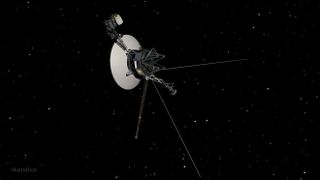
Spending 45 years traversing the solar system really does a number on a spacecraft.
NASA's Voyager 1 mission launched in 1977, passed into what scientists call interstellar space in 2012 and just kept going — the spacecraft is now 14.5 billion miles (23.3 billion kilometers) away from Earth . And while Voyager 1 is still operating properly, scientists on the mission recently noticed that it appeared confused about its location in space without going into safe mode or otherwise sounding an alarm.
"A mystery like this is sort of par for the course at this stage of the Voyager mission," Suzanne Dodd, project manager for Voyager 1 and its twin, Voyager 2, at NASA's Jet Propulsion Laboratory in California, said in a statement .
Related : Pale Blue Dot at 30: Voyager 1's iconic photo of Earth from space reveals our place in the universe
"The spacecraft are both almost 45 years old, which is far beyond what the mission planners anticipated," Dodd added. "We're also in interstellar space — a high-radiation environment that no spacecraft have flown in before."
The glitch has to do with Voyager 1's attitude articulation and control system, or AACS, which keeps the spacecraft and its antenna in the proper orientation. And the AACS seems to be working just fine, since the spacecraft is receiving commands, acting on them and sending science data back to Earth with the same signal strength as usual. Nevertheless, the AACS is sending the spacecraft's handlers junk telemetry data.
The NASA statement does not specify when the issue began or how long it has lasted.
Get the Space.com Newsletter
Breaking space news, the latest updates on rocket launches, skywatching events and more!
The agency says that Voyager personnel will continue to investigate the issue and attempt to either fix or adapt to it. That's a slow process, since a signal from Earth currently takes 20 hours and 33 minutes to reach Voyager 1; receiving the spacecraft's response carries the same delay.
— What Voyager 1 learned at Jupiter 40 years ago — Voyager at 40: 40 photos from NASA's epic 'grand tour' mission — Voyager 1's historic flyby of Jupiter in photos
The twin Voyager 2 probe, also launched in 1977, is behaving normally, NASA said. The power the twin spacecraft can produce is always falling, and mission team members have turned some components off to save juice — measures they hope will keep the probes working through at least 2025.
"There are some big challenges for the engineering team," Dodd said. "But I think if there's a way to solve this issue with the AACS, our team will find it."
Email Meghan Bartels at [email protected] or follow her on Twitter @ meghanbartels . Follow us on Twitter @ Spacedotcom and on Facebook .
Join our Space Forums to keep talking space on the latest missions, night sky and more! And if you have a news tip, correction or comment, let us know at: [email protected].
Meghan is a senior writer at Space.com and has more than five years' experience as a science journalist based in New York City. She joined Space.com in July 2018, with previous writing published in outlets including Newsweek and Audubon. Meghan earned an MA in science journalism from New York University and a BA in classics from Georgetown University, and in her free time she enjoys reading and visiting museums. Follow her on Twitter at @meghanbartels.
'Stellar tanning salon' brings light of alien suns to Earth
Tour the famous 'Pillars of Creation' with gorgeous new 3D views from Hubble and JWST (video)
SpaceX launching 20 Starlink satellites from Florida early on July 3
Most Popular
- 2 Scientists finally found 2 of the Milky Way's missing satellite galaxies. What could this mean for astronomy?
- 3 Boeing's Starliner can stay in space beyond 45-day limit, NASA says
- 4 Northrop Grumman names Cygnus cargo craft for fallen Challenger commander
- 5 'Great Food Truck Race' blasts off on 17th season with stop at NASA
Voyager 1 Returning Science Data From All Four Instruments

An artist’s concept of the Voyager spacecraft.
The spacecraft has resumed gathering information about interstellar space.
NASA’s Voyager 1 spacecraft is conducting normal science operations for the first time following a technical issue that arose in November 2023.
The team partially resolved the issue in April when they prompted the spacecraft to begin returning engineering data, which includes information about the health and status of the spacecraft. On May 19, the mission team executed the second step of that repair process and beamed a command to the spacecraft to begin returning science data. Two of the four science instruments returned to their normal operating modes immediately. Two other instruments required some additional work, but now, all four are returning usable science data.
The four instruments study plasma waves, magnetic fields, and particles. Voyager 1 and Voyager 2 are the only spacecraft to directly sample interstellar space, which is the region outside the heliosphere — the protective bubble of magnetic fields and solar wind created by the Sun.
Need Some Space?
While Voyager 1 is back to conducting science, additional minor work is needed to clean up the effects of the issue. Among other tasks, engineers will resynchronize timekeeping software in the spacecraft’s three onboard computers so they can execute commands at the right time. The team will also perform maintenance on the digital tape recorder, which records some data for the plasma wave instrument that is sent to Earth twice per year. (Most of the Voyagers’ science data is sent directly to Earth and not recorded.)
Voyager 1 is more than 15 billion miles (24 billion kilometers) from Earth, and Voyager 2 is more than 12 billion miles (20 billion kilometers) from the planet. The probes will mark 47 years of operations later this year. They are NASA’s longest-running and most-distant spacecraft. Both spacecraft flew past Jupiter and Saturn, while Voyager 2 also flew past Uranus and Neptune.
News Media Contact
Calla Cofield
Jet Propulsion Laboratory, Pasadena, Calif.
626-808-2469
14.6 billion miles away, NASA gets Voyager 1 talking again — and discovers a new mystery
That’s some repair job.
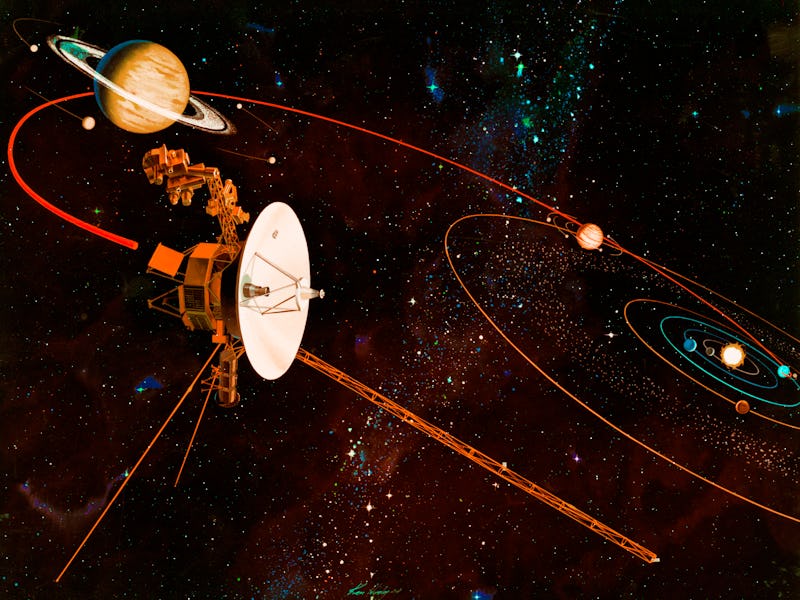
NASA’s Voyager 1 is on a fraught and unknowable journey into deep space. Some 14.6 billion miles from Earth, it and its sister craft, Voyager 2, are the furthest human-made objects from our planet, having made it beyond the edges of the Solar System and out into the interstellar medium. At such distances, anything can go wrong. Add to that the fact that these are old craft: The Voyagers launched in the 1970s. So when Voyager 1 started to send home weird, garbled nonsense instead of telemetry data in May of this year , NASA engineers might have been forgiven for calling it a day and pouring one out for perhaps the most successful space mission of all time.
But that’s not how NASA works . Instead, they started working on a remote diagnosis and fix for the record-breaking spacecraft. Now, some four months later, they are triumphant. Voyager 1 is back online and communicating perfectly with ground control as if it never happened. In fact, the fix turned out to be relatively simple — or as simple as anything can be with a 22-hour communications lag in each direction and billions of miles of space in between.
What happened to Voyager 1?
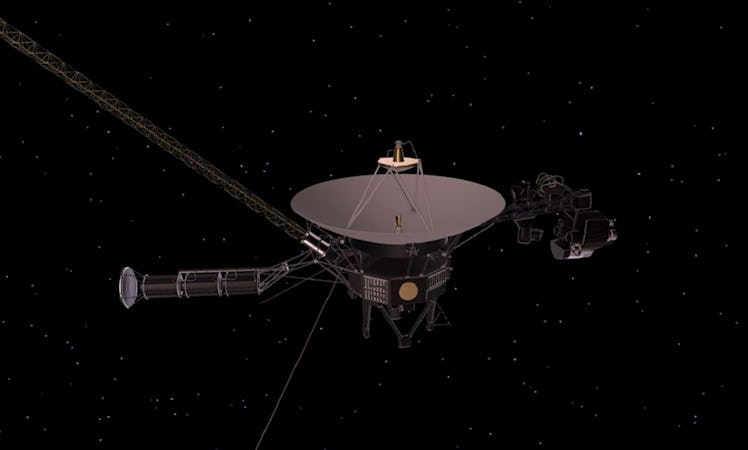
The high-gain antenna, shown on the left in this illustration, is how Voyager 1 sends and receives radio communications with NASA engineers here on Earth.
Cruising in interstellar space, the 45-year-old spacecraft appeared to be operating shockingly well and was transmitting reams of data back to Earth. But in mid-May, Voyager 1’s onboard system responsible for keeping its high-gain antenna pointed at Earth, known as the attitude articulation and control system, or AACS, started beaming home confusing jumbles of data instead of the usual reports about the spacecraft’s health and status. From our viewpoint, it appeared as if the spacecraft had developed something like an electronic version of aphasia — a condition that causes the loss of fluent speech.
“The data may appear to be randomly generated, or does not reflect any possible state the AACS could be in,” explained NASA in a statement from the time.
Even more bafflingly for engineers, Voyager 1 appeared to be in perfect condition despite the spacecraft’s bizarre status reports. The radio signal from the ship remained strong and steady, which meant the antenna was still pointed at Earth — and not in whatever configuration the AACS was claiming it was in to NASA in the reports. Similarly, Voyager 1’s science systems kept gathering and transmitting data as usual, without any of the same strangeness affecting the AACS. And, whatever was wrong with the AACS didn’t trip a fault protection system designed to put the spacecraft in safe mode when there’s a glitch.
Thankfully, NASA engineers diagnosed the problem. And with the diagnosis, they could employ a cure.
The fix — It turned out that the AACS had started sending its telemetry data via an onboard computer that had stopped working years ago. The dead computer corrupted all the outgoing data. All NASA engineers had to do was send the command to the AACS to use the correct computer to send its data home.
But there’s still a problem — The next challenge will be to figure out exactly what caused the AACS to switch computers in the first place. NASA says the system probably received a faulty command from another onboard computer. While they say it is not a major concern for Voyager 1’s well-being right now, the true culprit will need to be found and fixed to prevent future weirdness.
Voyager 1 lives on
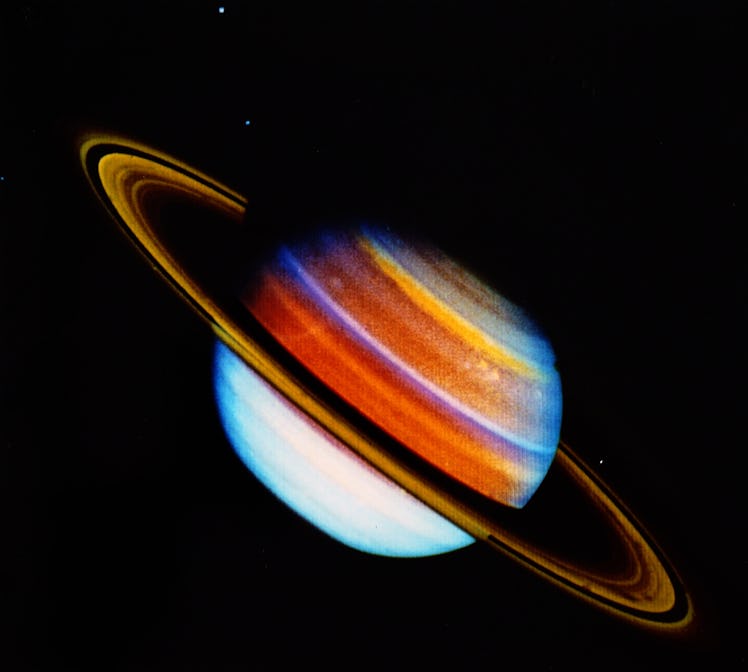
Voyager 1 has yielded revelations about our Solar System no one could have predicted.
Currently, Voyager 1 is more than 23.4 billion kilometers or 14.6 billion miles (and gaining, most of the time ) from Earth. You can watch the distance grow and see both Voyager spacecraft’s current positions in space on NASA’s website .
For the last decade, Voyager 1 has been cruising in interstellar space, beyond the reach of our Sun’s magnetic field. The field had offered the craft a little protection from cosmic rays and other interstellar radiation, much as Earth’s magnetic field offers some protection from high-energy particles and radiation from the Sun. Cosmic rays are known to interfere with electronics here on Earth — when one of those high-speed energetic particles strikes a computer chip, it can cause small memory errors, which add up over time — and it’s reasonable to expect that to be an issue for Voyager 1’s onboard computers, too.
“A mystery like this is sort of par for the course at this stage of the Voyager mission,” said Voyager 1 and 2 project manager Suzanne Dodd in a statement dated to May.
“The spacecraft are both almost 45 years old, which is far beyond what the mission planners anticipated. We’re also in interstellar space — a high-radiation environment that no spacecraft have flown in before.”
We’ll need to wait and see what new perils encounter Voyager next on its travels — and what new discoveries await.
Subscribe for free to Inverse’s award-winning daily newsletter.
This article was originally published on Aug. 31, 2022
- Space Science
- svg]:stroke-accent-900">
How the most distant object ever made by humans is spending its dying days
By Rahul Rao
Posted on Apr 28, 2021 4:00 PM EDT
4 minute read
The eyes of the world might be fixed upon Mars, where last week alone, the Ingenuity helicopter took flight and the Perseverance rover made oxygen . But farther—much farther—Voyager 1, one of the oldest space probes and the most distant human-made object from Earth, is still doing science.
The probe is well into the fourth decade of its mission, and it hasn’t come near a planet since it flew past Saturn in 1980. But even as it drifts farther and farther from a dimming sun, it’s still sending information back to Earth, as scientists recently reported in The Astrophysical Journal.
For decades, Voyager has been sailing away at around 11 miles (17 kilometers) every second. Each year, it travels another 3.5 AU (the distance between Earth and the sun) away from us. Now, it’s sending messages home even as it prepares to leave this solar system behind.
There are multiple ways to think about the “edge of the solar system.” One is a boundary region called the heliopause. That’s the frontier where the solar wind (the soup of charged particles continually thrown off by the sun) is too weak to hold off the interstellar medium—the plasma, dust, and radiation that fill the bulk of space.
When Voyager 1 left Earth in 1977, nobody was certain where the heliopause was, according to Bill Kurth , an astrophysicist at the University of Iowa who has been working with Voyager 1 since before it launched. Some scientists then even thought the heliopause was as close as 10 or even 5 AU—around the orbits of Jupiter, which Voyager 1 passed in 1979, or Saturn.
In reality, the heliopause is around 120 AU away. We know this partly because Voyager 1 crossed the heliopause in August 2012, a whole three and a half decades after it departed Earth. That puts the probe well and truly in interstellar space.
[Related: Voyager 2 can finally probe the rarified plasma surrounding our solar system ]
Out here, space is filled with interstellar medium—but you’ll not see very much of it. A cube of air at sea level on Earth contains more than a trillion times as many molecules as an equal-sized cube of even the interstellar medium’s densest parts. The region that Voyager 1 is traversing is sparser still. And for the most part, it’s quiet.
But every few years, as Voyager 1 records more data about the plasma and dust out here, it finds something . For instance, in 2012 and again in 2014, Voyager 1 felt a shock. According to Kurth, what Voyager 1 recorded was a magnetic spike, accompanied by a burst of energetic electrons that caused intense, oscillating electric fields. These shocks are the most distant effects of the sun, rippling outwards even past the heliopause.
What Voyager 1 encountered in 2020 was another jump in magnetic field strength, but without those intense electrical oscillations. Scientists instead think it’s a pressure front, a much more subtle disturbance moving out into the interstellar medium. Voyager 1 previously encountered something like it in 2017.
According to Jon Richardson , an astrophysicist at MIT who wasn’t an author on the paper, this latest finding shows that Voyager 1 is still capable of surprising scientists. Normally, he says, the probe would need to experience a shock in the surrounding plasma to measure its density. But with observations like this one, scientists have found a way to use Voyager 1 to continually monitor that density—over 13 billion miles away from us.
Richardson also says the findings show that Voyager 1 continues to feel the sun’s tendrils, billions of miles past the heliopause. “The sun is still having a major effect,” he says, “far outside the heliosphere.”
Meanwhile, Voyager 1 is still within the sun’s gravitational influence. In about 300 years, scientists expect, Voyager 1 will start to enter the inner edge of the Oort cloud, that shroud of comets which stretches as far as several light-years away.
We’ve never actually seen evidence of the Oort cloud, but sadly, Voyager 1 likely won’t be the one to reveal it. The probe is quite literally living on borrowed time. Plutonium-238, the radioisotope that powers the probe’s generator, has a half-life of about 88 years.
[Related: Ask Us Anything: What happens to your body when you die in space? ]
As a result, Voyager 1 is starting to lose fuel. Scientists are already having to make choices about which parts of the probe they should keep functional. By the mid-2020s, it’s likely that the probe won’t be able to power even a single instrument.
Still, scientists like Kurth hope they can eke the probe’s life out to 2027, the 50th anniversary of its launch. That, Kurth says, is a milestone that none of Voyager 1’s designers could ever have foreseen.
Latest in NASA
How nasa and spacex get spacecraft safely back on earth how nasa and spacex get spacecraft safely back on earth.
By Marcos Fernandez Tous / The Conversation
NASA is paying SpaceX to destroy the International Space Station NASA is paying SpaceX to destroy the International Space Station
By Andrew Paul
How NASA Fixed Voyager 1 From 15 Billion Miles Away
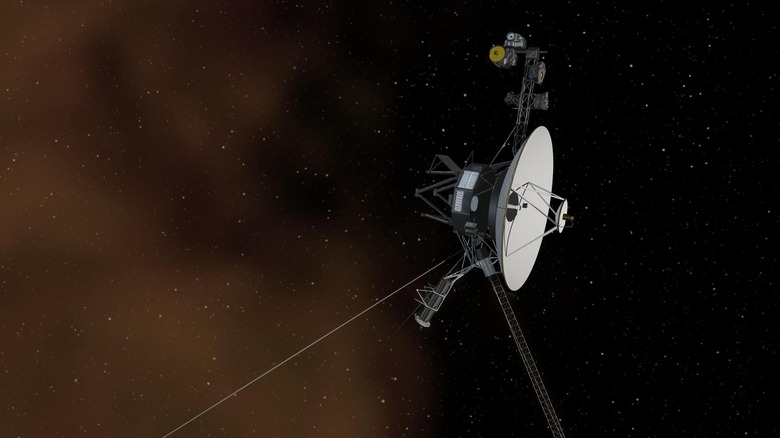
NASA engineers say they've fixed a problem that had temporarily halted all but basic communications with Voyager 1, the longest-operating spacecraft in history. As a result of their efforts and ingenuity, the probe has returned to transmitting science and engineering data back to Earth.
The successful fix caps a half-year effort that began in November 2023, when the probe stopped returning readable data. The NASA engineering team responsible for the fix ultimately focused their efforts on one of three computers aboard the unmanned spacecraft. That problem computer, known as the flight data system (FDS), wasn't correctly communicating with another part of the probe responsible for sending data through the spacecraft's radio transmitter.
Fixing the issue wasn't as simple as uploading a software update for a smartphone app. The Voyager 1 was launched in 1977, and now the engineers had to work with its half-century old technology.
The team's success extended humanity's furthest mission into space. The Voyager 1 was designed to study magnetic fields and weather as it conducted flybys of Jupiter and Saturn before exiting the heliosphere — a pocket of space created by the Sun containing its magnetic fields and solar winds — in 2012. Voyager 1 is currently over 15 billion miles away from home, with a transmission delay of 22.5 hours each way.
NASA teams had to comb through the Voyager 1 systems documentation to develop a patch, while ensuring they didn't cause any further issues. Here's how they did it.
Identifying the problem
The journey from identification of the problem to a complete fix took nearly eight months, as per NASA press releases. The Voyager probes send data to Earth via a radio signal containing a single data package that has both the information gathered by the onboard science instruments and the engineering information about the status of the spacecraft. On November 14, 2023, NASA realized that the data sent from Voyager 1 was unreadable. In December 2023, the team tried restarting some of the probe's systems, but that did not solve the problem.
After months of working on a fix, NASA in March 2024 announced its team had made progress with understanding the issue with Voyager 1. On March 1, the team sent a "poke" command to the probe, making its software attempt a variety of sequences that could work around problems they'd identified with its computer. NASA received a response from Voyager on March 3, and after some difficulty decoding it, the teams realized it was a readout of the system's memory. The team was able to devise a solution by analyzing the differences between earlier and current readouts.
In April 2024, NASA said it had found the cause – 3% of the flight data system's memory had been corrupted, causing the abnormal behavior. NASA engineers suspected a single chip holding a part of the computer code had stopped working. Fortunately, they figured out a solution.
Devising and implementing a solution
The NASA team was able to move various pieces of code to another location in the memory of the probe's computers. On April 18, the NASA team tested the solution by sending only a part of the fix — the corrected code responsible for packaging the engineering data — to its new location in probe computer's memory. When NASA received the probe's response on April 20, engineers learned the fix had worked as intended. Now, the Voyager 1 was correctly transmitting its health and status data. The team then began working on fixes to enable the probe to send back data collected from the science instruments too.
On May 17, a fix for sending science data from two of the four instruments (plasma wave subsystem and magnetometer) was transmitted to the probe, and it was a success. In June, NASA announced that the team had managed to fix the issue with the other two instruments (cosmic ray subsystem and low energy charged particle instrument) in the interim. Additional fixes for problems with the timekeeping software and digital tape recorder were being planned, NASA said.
Brief history of the Voyager spacecraft
This isn't the first issue onboard the Voyager that NASA's team has faced during the probe's over 40 years in space . For example, last year, NASA briefly lost contact with Voyager 2 – Voyager 1's sister probe launched on a different trajectory. NASA's even faced other data issues with Voyager 1 . Still, both of their missions continue.
The Voyager 1 and Voyager 2 are identical spacecraft, with 10 science instruments onboard, six of which on Voyager 1 either stopped working or were deactivated after it flew past Saturn. The two Voyager probes are both now beyond the heliosphere, and are the first spacecraft to get a taste of interstellar space. Voyager 1 left the heliosphere in 2012, while Voyager 2 left in 2018.
Both probes have seen some awesome sights. Both Voyager spacecraft flew past Jupiter and Saturn, showcasing the Great Red Spot on the former and the hexagonal polar vortices of the latter. The two probes also captured data of some of the gas giants' moons (including Ganymede, Io, Europa, Enceladus, Titan, Iapetus, and Tethys), while Voyager 2 flew past Uranus and Neptune. Apart from discoveries about the planets and moons we already knew about, the two probes were also responsible for discovering new moons on each of the planets.
Voyager 1 is back to life in interstellar space, but for how long?
NASA engineers have succeeded in breathing new life into Voyager 1 after the spacecraft, launched in 1977, went silent seven months ago.

NASA engineers have succeeded in breathing new life into Voyager 1 , the spacecraft launched in 1977 and once again communicating after it went silent seven months ago. But now comes another challenge: Keeping Voyager 1 scientifically useful for as long as possible as it probes a realm where no spacecraft has gone before .
Voyager 1 and its twin, Voyager 2 , are treasured at NASA not only because they have sent home astonishing images of the outer planets, but also because in their dotage, they are still doing science that can’t be readily duplicated.
They are now in interstellar space, far beyond the orbits of Neptune and Pluto. Voyager 1 is more than 15 billion miles from Earth and Voyager 2 nearly 13 billion miles. Both have passed the heliopause , where the “solar wind” of particles streaming from the sun terminates.
“They’re going someplace where we have nothing, we have no information,” NASA Deputy Administrator Pam Melroy said. “We don’t know anything about the interstellar medium. Is it a highly charged environment? Are there a lot of dust particles out there?”
Even as the Voyagers continue their journeys, engineers and scientists at the NASA Jet Propulsion Laboratory in Pasadena, Calif. are mourning the loss of Ed Stone, the scientist who guided the mission from 1972 until his retirement in 2022. Stone, a former director of JPL, died June 9 at the age of 88.
“It’s great. This is exploration. This is wonderful,” Stone told The Washington Post in 2013 when he and his colleagues determined that Voyager 1 had reached interstellar space.
Voyager 1 has four scientific instruments still operational in this extended phase of its mission, but it suddenly ceased sending intelligible data on Nov. 14. A “tiger team” of engineers at JPL spent the ensuing months identifying the problem — a malfunctioning computer chip — and restoring communication.
That laborious process is nearly complete. Data is coming from all four instruments, project scientist Linda Spilker said, though engineers are still checking to see whether data from two of the instruments is fully usable.
What no one can change, though, is the mortality of a spacecraft with a limited power supply. Voyager 1 is running on fumes, or, more precisely, on the dwindling power from the radioactive decay of plutonium.
The Voyagers have traveled so far from the sun they can’t rely on solar power and instead use a radioisotope thermoelectric generator. But an RTG doesn’t last forever. Voyager 1 and Voyager 2 will eventually go silent as they continue to cruise the galaxy. NASA scientists and engineers are hoping Voyager 1 can keep sending data until at least Sept. 5, 2027, the 50th anniversary of its launch.
“At some point, we’ll have to start turning off the science instruments one by one,” Spilker said. “Once we’re out of power, then we can no longer keep the spacecraft pointed at the Earth. And so [the Voyagers] will then continue on as what I like to think of as our silent ambassadors.”
In a sense, this is all a bonus because the primary mission for the two Voyagers was the exploration of the outer planets. Both visited Jupiter and Saturn, and Voyager 2 went on to Uranus and Neptune in what was known as the “Grand Tour” of the outer solar system, enabled by a rare orbital arrangement of the planets. The Voyagers delivered spectacular close-up images of the outer planets, and the mission ranks among NASA’s greatest achievements.
The gravitational slingshot from the planetary encounters sent Voyager 1 out of the elliptical plane of the solar system and did the same to Voyager 2 in a different direction.
About four years ago, Voyager 1 encountered something unexpected — a phenomenon scientists have dubbed a pressure front. Jamie Rankin, deputy project scientist, said the instruments on the spacecraft picked up a sudden change in the magnetic field of the interstellar environment, as well as a sudden increase in the density of particles.
What exactly caused this change remains unknown. But NASA scientists are eager to get all the data flowing normally again to see whether the pressure front is still detectable.
“Is the pressure front still there; what is happening with it?” Melroy said.
Voyager 1 is heading toward the constellation Ophiuchus, according to NASA, and in about 38,000 years, it will come within 1.7 light-years of an unremarkable star near the Little Dipper. But although it will have long gone silent, it does carry the equivalent of a message in a bottle: the “Golden Record.”
The record was curated by a committee led by astronomer Carl Sagan and includes greetings in 55 languages, sounds of surf, wind and thunderstorms, a whale song and music ranging from Beethoven to Chuck Berry to a Navajo chant. The Golden Record is accompanied by instructions for playing it, should the spacecraft someday come into the hands of an intelligent species interested in finding out about life on Earth.
“The spacecraft will be encountered and the record played only if there are advanced spacefaring civilizations in interstellar space,” Sagan said.
But that advanced spacefaring civilization might not be an alien one, NASA scientists point out. It’s conceivable that the cosmic message in a bottle could be picked up someday by a human deep-space mission eager to examine a vintage spaceship.

- Today's news
- Reviews and deals
- Climate change
- 2024 election
- Fall allergies
- Health news
- Mental health
- Sexual health
- Family health
- So mini ways
- Unapologetically
- Buying guides
Entertainment
- How to Watch
- My watchlist
- Stock market
- Biden economy
- Personal finance
- Stocks: most active
- Stocks: gainers
- Stocks: losers
- Trending tickers
- World indices
- US Treasury bonds
- Top mutual funds
- Highest open interest
- Highest implied volatility
- Currency converter
- Basic materials
- Communication services
- Consumer cyclical
- Consumer defensive
- Financial services
- Industrials
- Real estate
- Mutual funds
- Credit cards
- Balance transfer cards
- Cash back cards
- Rewards cards
- Travel cards
- Online checking
- High-yield savings
- Money market
- Home equity loan
- Personal loans
- Student loans
- Options pit
- Fantasy football
- Pro Pick 'Em
- College Pick 'Em
- Fantasy baseball
- Fantasy hockey
- Fantasy basketball
- Download the app
- Daily fantasy
- Scores and schedules
- GameChannel
- World Baseball Classic
- Premier League
- CONCACAF League
- Champions League
- Motorsports
- Horse racing
- Newsletters
New on Yahoo
- Privacy Dashboard
What Voyager 1's near-death experience says about the future of space exploration
From more than 15 billion miles away, NASA engineers last April began repairing a space probe that is headed to the constellation of Ophiucus, though it won't arrive for some 38,000 years. NASA launched Voyager 1 in 1977 and it has already outlived expectations, but the space agency hopes to continue receiving data from the probe until at least 2030. Yet after Voyager 1 experienced a computer glitch in November, it began transmitting incomprehensible data (which isn't entirely unusual for it), prompting NASA to initiate those long-distance fixes.
After some uncertainty if any of it would work, the repairs succeeded . Even better, when Salon spoke with NASA about the problem of fixing distance spacecraft, the experts were optimistic about its future and what it says about space exploration in general.
To understand why, it is first necessary to break down what happened to Voyager 1 in the first place. In November, the space probe sent a signal that did not include any data. Engineers figured out that the issue was either with the flight data subsystem (FDS) or the telemetry modulation unit (TMU). By the last week of February, NASA sent a "poke" to Voyager 1 to prompt the FDS to send a memory readout with data; not only did this succeed, but NASA soon uploaded a separate command that caused Voyager 1 to reply with a full memory readout that helped them identify the specific issue with the FDS.
"The team confirmed that the issue is with the FDS," NASA Jet Propulsion Laboratory media relations specialist Calla Cofield told Salon. "A chip responsible for storing 256 words of the FDS memory has a stuck bit (the code is stuck at a 0 or a 1), indicating the part failed, either due to age or due to external particle damage. This section represents about 3% of the FDS memory. The team would need to relocate the portion of the software code stored on the damaged chip."
During the April mission, NASA transmitted a command to the Voyager 1 to both relocate the portion of the impacted FDS software code and redirect references to that code to other places in the spacecraft software.
"On April 20, the team received engineering data from the spacecraft, indicating that the command was a success," Cofield said. "All indications suggest the spacecraft is fine after five months of no contact."
The team began once again receiving scientific data from Voyager 1 on May 19, and by June all of the science instruments on Voyager 1 had resumed sending usable data. Even so, Cofield added that "housekeeping [is] still ongoing with the spacecraft."
Of course, this is not the end of the issue; Voyager 1 is not the only space probe out there that may some day require repairs. Currently there are two other space probes that have left the Solar System and remain operational, Voyager 2 and New Horizons. Additionally NASA has sent out two other probes that are now defunct, Pioneer 10 and Pioneer 11. Can the lessons which allowed NASA to repair Voyager 1 be applied to these and other distant space craft?
Want more health and science stories in your inbox? Subscribe to Salon's weekly newsletter Lab Notes .
"The future is less about repairs than about finding ways to work around problems," Bob Rasmussen, a member of the Voyager flight team, said. "We know several life-limiting factors and have strategies for preserving capability as long as possible. We can’t predict outright failures though, so we need to deal with them as they arise."
This is not to say that Rasmussen is entirely hopeful about NASA's ability to salvage malfunctioning probes. In 2019, the agency had to turn off a heater for the cosmic ray subsystem instrument in Voyager 2 to conserve the probe's power. In April NASA further kept Voyager 2 chugging along by tapping into a small reservoir of backup power that is used to fuel the onboard safety mechanism. By doing this, NASA believes it can keep the craft powered with enough juice that they will not need to shut down a scientific instrument until 2026.
Voyager 1 and 2, meanwhile, are always on the verge of a more lasting breakdown . Even if all of their systems perform optimally going forward, the spacecrafts are still not expected to survive past the 2030s. If anything, the fact that they lasted this long is a testament to the skill and dedication of the 1970s engineers who built them. Unfortunately, there could be a day when more than one of their vital systems simply ceases to properly function.
"Worst case is that both can fail at any time," Rasmussen said. "Not all failures are recoverable. For many, we would never be able to tell what happened, because contact would simply cease."
Rasmussen added that the best case scenario is that Voyager 1 continues to function for another five to 10 years. "We have a long-term strategy for gradually reducing activities as power wanes and for using degraded modes of operation," Rasmussen said. "But we also know what happens to best laid plans."
On a tragic note , June was also the month in which Ed Stone, the man who pioneered the Voyager missions and led their missions for half a century, died. In their obituary for former Jet Propulsion Laboratory director, NASA wrote that Stone was "a trailblazer who dared mighty things in space" and "took humanity on a planetary tour of our solar system and beyond, sending NASA where no spacecraft had gone before."
Recommended Stories
Nasa’s 47-year-old voyager 1 probe is back in action after months of technical issues.
NASA engineers have managed to get the long-running Voyager 1 space probe fully back in working order after some seven months of technical difficulties. In November 2023, the spacecraft started sending back unreadable data.
FTC warns some PC manufacturers that they're violating right to repair rules
The FTC warned ASRock, Gigabyte and Zotech to get rid of them 'warranty void' stickers and stop threatening to void warranties if users break the seal.
The average car on American roads is now 12.6 years old
S&P Global Mobility's latest study found that Americans are hanging onto their cars for longer than ever.
June jobs report: US labor market set to show 'cooling but not cool' trend continues
The June jobs report comes at a crucial moment as economists debate whether the US labor market is still normalizing to pre-pandemic levels or showing the early signs of a broader slowdown.
Most single-use kitchen gadgets aren't worth it — except this $10 cherry pitter
The No. 1 bestseller speeds up the process of preparing pies and more like you wouldn't believe, and takes up very little space.
Nathan's Hot Dog Eating Contest 2024: Live updates, highlights as competition goes on without Joey Chestnut
It's a tradition unlike any other: the 2024 Nathan's Hot Dog Eating Contest on the Fourth of July. But the event will look a bit different this year, with Joey Chestnut out of the event due to a contract dispute.
The Morning After: Samsung’s Galaxy Z Flip 6 and Fold 6 leak early
The biggest news stories this morning: The Game Boy Camera gets a second life as a webcam, Japan’s government finally says goodbye to floppy disks, What Meta should change about Threads.
CD rates today, July 4, 2024 (top APY reaches 5.15%)
If you’re on the hunt for today’s best CD rates, we’ve narrowed down some of the top offers. Learn more about CD rates today and how to open an account.
The best 4th of July sales from Apple, Amazon, Anker and more
These are the best July 4 deals on tech that you can get this year, including discounts on Apple devices, Solo Stove gear, small kitchen appliances and more.
Trump is keen to lower corporate taxes. Not all his GOP colleagues are on board.
Republicans are far from unified when it comes to what to do about the 21% federal corporate tax rate if they control Washington next year.
Braves manager Brian Snitker OK after taking Ozzie Albies foul ball to the groin
"He's OK, but that bounced right into his belly ... Oh, no. Not on the belly."
What questions do you have about Biden's future and the presidential race?
Send Yahoo News your questions about the tumultuous turn in the 2024 presidential race following President Biden's poor debate performance.
Fourth of July fight fiasco: How a Jack Dempsey title bout KO'd a tiny Montana town's finances
The July 4, 1923, heavyweight title fight between Jack Dempsey and Tommy Gibbons in Shelby, Montana, stands out as one of the most economically disastrous events in boxing history.
Cloudflare is taking a stand against AI website scrapers
Cloudflare has introduced a free tool for any of its clients to block all known AI website crawlers, even those that aren't following the rules.
Kevin Bacon, who appears in the '80s-Hollywood slasher 'Maxxxine,' looks back on his early fame: 'I didn't really enjoy it, honestly'
The established actor, who plays a jaded private detective in the Ti West film, shares his advice for up-and-coming stars.
What Meta should change about Threads, one year in
Threads has grown to 175 million users, but it's still not really clear what it's actually for.
'Just right for my 67-year-old body': These Hanes 'unicorn shorts' are $9 for 4th of July
The comfy bottoms are a go-to for 40,000+ shoppers — you can grab them for over 50% off in black.
How to watch the 2024 Nathan's Hot Dog Eating Contest — and what Joey Chestnut is doing instead
The 2024 Nathan's Hot Dog Eating Contest won't feel the same without Joey Chestnut, but the show must go on.
9 surprising items professional movers won't move — are yours on the list?
Did you know movers won't handle your nail polish remover? Seriously. Here's what your movers won't move under any circumstances.
This flowy tank 'covers the right areas,' and it's just $12 for the 4th of July
One reviewer declared that it's Florida summer-approved, so you know it's light and breathable!

Ed Stone, scientist who led the Voyager space missions through the solar system and beyond – obituary
P rofessor Ed Stone, who has died aged 88, was project scientist for Nasa’s Voyager 1 and Voyager 2 spacecraft missions from design and build to their launch, two weeks apart, in 1977.
Intended to explore the outer solar system with the exception of Pluto, Voyager 2 passed Neptune in 1989, sending back unprecedented data and photographs of alien worlds which stunned the astronomical community. To Stone’s astonishment, the two probes continued to function despite dwindling power supplies as they plunged on into the darkness beyond the planets for a further 33 years, and they continue collecting data today. Voyager 1 is now the most remote emissary of the human race, having left the Sun’s domain and entered the void between the stars of our galaxy.
Voyager was the brainchild of Gary Flandro, a summer student in the 1960s at Nasa’s Jet Propulsion Laboratory, who realised that the mid-1970s would offer a once-every-176 years opportunity for spacecraft to visit all four giant planets when they were in rare alignment.
The twin plutonium-powered spacecraft first visited Jupiter and Saturn, and Voyager 2 remains the only probe to have made fly-bys of Uranus and Neptune. The mission transformed our view of the solar system and raised the possibility that the conditions to support basic lifeforms may exist beyond Earth – and close enough to investigate.
Highlights have included beaming back the first glimpses of methane oceans on Titan, Saturn’s largest moon; ash-spewing volcanoes on Io, one of Jupiter’s moons; and a thunderstorm on Saturn. In addition they tracked 1,000 mph winds on the surface of Neptune and discovered five-mile-tall geysers erupting from the icy surface of Neptune’s largest moon, Triton.
“When I started on Voyager my two daughters were young,” Stone recalled in 2012. “By the time they were in college we had passed Saturn and were on our way to Uranus. They got married and the Voyagers just kept going, and we had grandchildren and Voyager just kept going and our grandchildren are now aware of what’s happening to the Voyagers just like our children were.”
By the time Stone retired from the mission in 2022, the Voyager spacecraft had travelled beyond the outer boundary of the heliosphere, the bubble of supersonic charged particles streaming outwards from the sun, and had ventured into interstellar space, where they continue to collect and transmit data to Earth.
By the mid-2020s the vessels will fall silent, but their journey will continue for billions of years, the spacecraft carrying with them a “compilation album” of what life was like when human beings roamed the Earth, featuring everything from Azerbaijani bagpipes, through the music of Beethoven and Chuck Berry to the sound of humpback whales and a message from Jimmy Carter – US president at the time the spacecraft were launched – for the interest and entertainment of alien civilisations they might encounter along the way.
The elder of two sons, Edward Carroll Stone was born in Knoxville, Iowa, on January 23 1936 and grew up in Burlington, Iowa, where his father ran a small construction company. After leaving school he studied physics at the University of Chicago, receiving a master’s degree in 1959 and a doctorate in 1964.
He then joined a former colleague, Rochus Vogt, in helping to launch a space physics programme at the California Institute of Technology, Pasadena, where he was appointed professor in 1976 and chaired the university’s physics, maths and astronomy division in the mid-1980s.
Stone went on to design scientific instruments for US satellites, oversaw the construction of the WM Keck Observatory in Hawaii and led the establishment of LIGO (Laser Interferometer Gravitational-Wave Observatory), a billion-dollar project that in 2015 made the first direct observations of gravitational waves, ripples in space time that scientists had been looking for for years.
In 1991 Stone was appointed head of Nasa’s Jet Propulsion Laboratory in La Cañada Flintridge, California, and continued to work on missions that included Mars Pathfinder, which landed the Sojourner rover on Mars in 1997; Galileo, which orbited Jupiter for eight years; Cassini, which orbited Saturn for 13 years, and the Parker Solar Probe, which flew through the corona, the sun’s upper atmosphere, in 2021.
He was awarded the US National Medal of Science in 1991 and the Shaw Prize in Astronomy in 2019.
Stone is survived by two daughters. His wife Alice died in December.
Ed Stone, born January 23 1936, died June 9 2024
Sign up to the Front Page newsletter for free: Your essential guide to the day's agenda from The Telegraph - direct to your inbox seven days a week.

Voyager 1’s Mysterious Encounter in Deep Space
NASA has recently announced an unusual encounter by the Voyager 1 spacecraft, currently traversing the vast expanse of deep space. While the nature of this encounter remains shrouded in mystery, it has ignited a surge of curiosity and speculation among scientists.
Voyager 1, launched in 1977, holds the distinction of being the farthest human-made object from Earth. Its journey has provided invaluable insights into the interstellar medium, the space between stars. The spacecraft’s continued operation, despite its immense distance, is a testament to its remarkable longevity and the ingenuity of its designers.
What Makes This Encounter So Unusual?
The unusual data received from Voyager 1 suggests that the spacecraft has encountered an unexpected phenomenon. The nature of this phenomenon is still under investigation, but its implications are potentially significant. Scientists are analyzing the data meticulously, hoping to unravel the secrets it holds.
The data received from Voyager 1’s instruments indicate a significant shift in the density of the interstellar medium. This shift, coupled with other unusual readings, has led scientists to believe that the spacecraft may have encountered a region of space with unique characteristics.
Potential Explanations
While the exact nature of the encounter remains unclear, several hypotheses have been proposed by scientists:
- A region of higher density: The spacecraft may have entered a region of the interstellar medium with a higher density of particles than previously encountered.
- A new type of interstellar cloud: Voyager 1 could be interacting with a previously unknown type of interstellar cloud, perhaps composed of different materials or exhibiting unusual properties.
- A magnetic anomaly: The spacecraft might have encountered a magnetic anomaly, such as a strong magnetic field or a change in the direction of the interstellar magnetic field.
Further analysis of the data is necessary to determine the most likely explanation for this unexpected encounter.
Significance of the Discovery
Regardless of the specific nature of the encounter, it underscores the vastness and complexity of the universe. Voyager 1’s journey serves as a constant reminder that there is still much to learn about the space around us.
This discovery also highlights the importance of continued exploration and scientific inquiry. As we venture further into the cosmos, we are likely to encounter more surprises and mysteries, pushing the boundaries of our understanding of the universe.
Voyager 1’s remarkable voyage has already yielded countless discoveries, and this latest encounter promises to provide even more insights into the nature of the interstellar medium. As scientists continue to analyze the data, we can expect to learn more about the mysteries of deep space and the universe we inhabit.
© 2024 by SchoolTube
Username or Email Address
Remember Me
Forgot password?
Enter your account data and we will send you a link to reset your password.
Your password reset link appears to be invalid or expired.
Privacy policy.
To use social login you have to agree with the storage and handling of your data by this website. Privacy Policy
Add to Collection
Public collection title
Private collection title
No Collections
Here you'll find all collections you've created before.

IMAGES
VIDEO
COMMENTS
20 May 2022. Illustration of NASA's Voyager 1 and 2 probes. (NASA and JPL-Caltech) NASA's Voyager 1 is continuing its journey beyond our Solar System, 45 years after it was launched. But now the veteran spacecraft is sending back strange data, puzzling its engineers. NASA said on Wednesday that while the probe is still operating properly ...
Read now. Image: NASA. As NASA wrestles with Artemis 1's engine woes that are delaying the return to human exploration of the moon, the agency has solved another mystery, one causing its 45-year ...
They mystery of its junk data has been solved, NASA says.(Image credit: NASA) NASA's Voyager 1 probe is finally making sense again in interstellar space. After months of sending junk data about ...
After the team relocated the code to a new location in the FDS, Voyager 1 finally sent back intelligible data on April 20, 2024 — but only from two of its four science instruments. Now, just two ...
The Voyager 1 spacecraft is sending back a steady stream of scientific data from uncharted territory for the first time since a computer glitch sidelined the historic NASA mission seven months ago.
On 14 November 2023, NASA's interstellar space probe Voyager 1 began sending gibberish back to Earth. For five months, the spacecraft transmitted unusable data equivalent to a dial tone. In ...
NASA/JPL-Caltech. Back in May, NASA reported that the Voyager 1 space probe was sending back jumbled or inaccurate telemetry data. The probe itself seemed to be in good shape, with a signal that's ...
The engineering team with NASA's Voyager 1 spacecraft is trying to solve a mystery: The interstellar explorer is operating normally, receiving and executing commands from Earth, along with gathering and returning science data. But readouts from the probe's attitude articulation and control system (AACS) don't reflect what's actually happening onboard.
The 45-year-old probe has been a model of endurance, continuing to send back data using decades-old technology. But on May 18, 2022, NASA announced that Voyager 1 has been sending back mysterious ...
Voyager 1 stopped sending readable science and engineering data back to Earth on November 14, 2023, even though mission controllers could tell the spacecraft was still receiving their commands and otherwise operating normally. In March, the Voyager engineering team at NASA's Jet Propulsion Laboratory in Southern California confirmed that the ...
For the first time in five months, Voyager 1 is now transmitting usable data about the health and status of its onboard engineering systems back to our planet, NASA's Jet Propulsion Laboratory ...
NASA's Voyager 1 is back "conducting normal science operations" for the first time since a technical glitch some seven months ago sidelined the spacecraft, space agency officials announced.. Why it matters: The spacecraft that launched in 1977 has collected key scientific data, and at more than 15 billion miles from Earth it's the farthest human-made object in space.
Nearly 45 years into its space journey, the NASA Voyager 1 probe is sending back mysterious data that has left the spacecraft's engineers confused. The engineering team said Voyager 1 appears to ...
Original Story 5/19: Voyager 1 continues to return science data and otherwise operate as normal, but readouts beamed back to Earth from the probe's attitude articulation and control system (AACS ...
Voyager 1 is a certified space soarer, coming up on half a century of flight-time and still going strong. But it's beaming back an abnormal message to NASA, and they're scrambling to understand ...
NASA's Voyager 1 spacecraft is sending home strange data about its orientation. ... Voyager 1 back online! Next Full Moon; ... Mysterious substance may be interacting with itself in nearby galaxy.
Two other instruments required some additional work, but now, all four are returning usable science data. The four instruments study plasma waves, magnetic fields, and particles. Voyager 1 and Voyager 2 are the only spacecraft to directly sample interstellar space, which is the region outside the heliosphere — the protective bubble of ...
Voyager 1 is starting to make some sense. Since November 2023, NASA's Voyager 1 spacecraft has been sending a steady radio signal to Earth, but the signal does not contain usable data. The ...
For months now, the most distant spacecraft to Earth - Voyager 1 - has been talking gibberish on the interplanetary 'radio'. The repetitive jumble of 1s and 0s it's sending back to our planet, 24 billion kilometers (15 billion miles) away, has made no sense to scientists until now. Turns out, officials at NASA just needed to give the oh-so ...
Voyager 1 has yielded revelations about our Solar System no one could have predicted. Currently, Voyager 1 is more than 23.4 billion kilometers or 14.6 billion miles (and gaining, most of the time ...
But even as it drifts farther and farther from a dimming sun, it's still sending information back to Earth, as scientists recently reported in The Astrophysical Journal. For decades, Voyager has ...
The Voyager 1 spacecraft is sending back some funky data from interstellar space that's leaving NASA engineers scratching their heads. Readouts on the orientation of the 1970s-era space probe now ...
Now, the Voyager 1 was correctly transmitting its health and status data. The team then began working on fixes to enable the probe to send back data collected from the science instruments too.
Voyager 1, NASA's farthest-traveled spacecraft, continues to send back data nearly 50 years after its launch. Recently, it has transmitted mysterious signals...
Voyager 1 and Voyager 2 will eventually go silent as they continue to cruise the galaxy. NASA scientists and engineers are hoping Voyager 1 can keep sending data until at least Sept. 5, 2027, the ...
Voyager 1, NASA's interstellar probe, is once more delivering usable data from all its instruments. This news delights the scientific community after several months of uncertainty.
From more than 15 billion miles away, NASA engineers last April began repairing a space probe that is headed to the constellation of Ophiucus, though it won't arrive for some 38,000 years. NASA launched Voyager 1 in 1977 and it has already outlived expectations, but the space agency hopes to continue receiving data from the probe until at least 2030.
Intended to explore the outer solar system with the exception of Pluto, Voyager 2 passed Neptune in 1989, sending back unprecedented data and photographs of alien worlds which stunned the ...
The unusual data received from Voyager 1 suggests that the spacecraft has encountered an unexpected phenomenon. The nature of this phenomenon is still under investigation, but its implications are potentially significant. Scientists are analyzing the data meticulously, hoping to unravel the secrets it holds.